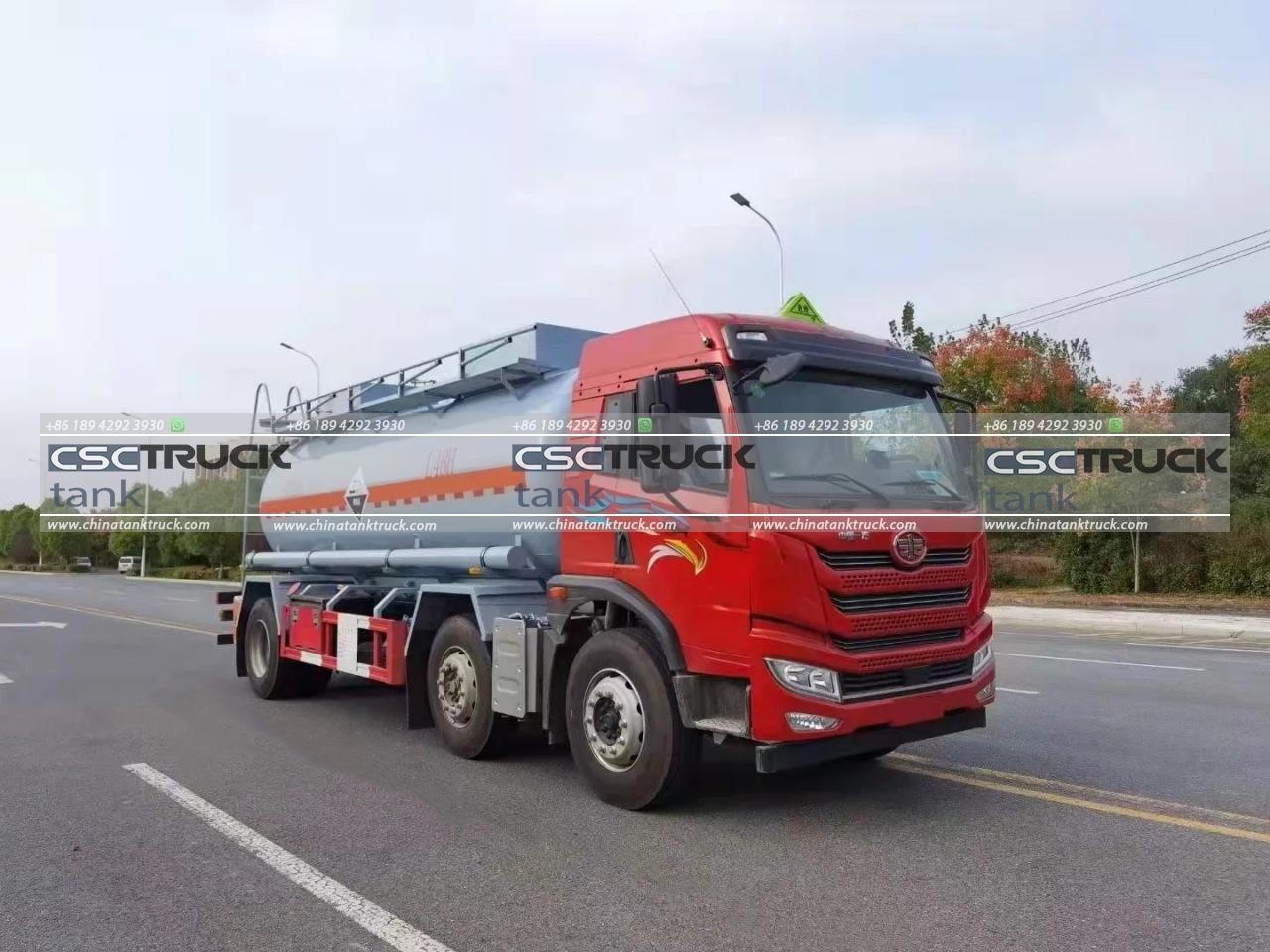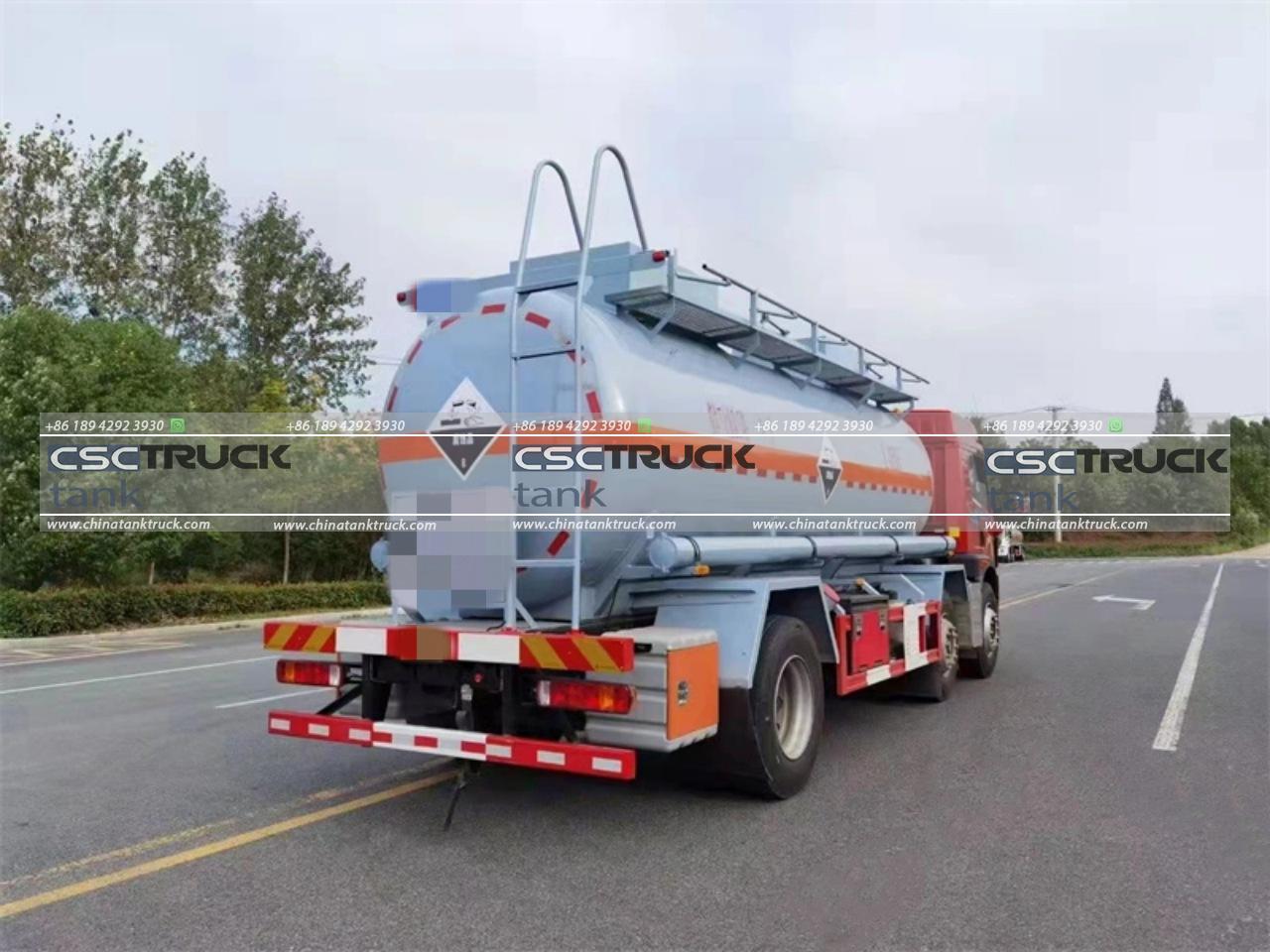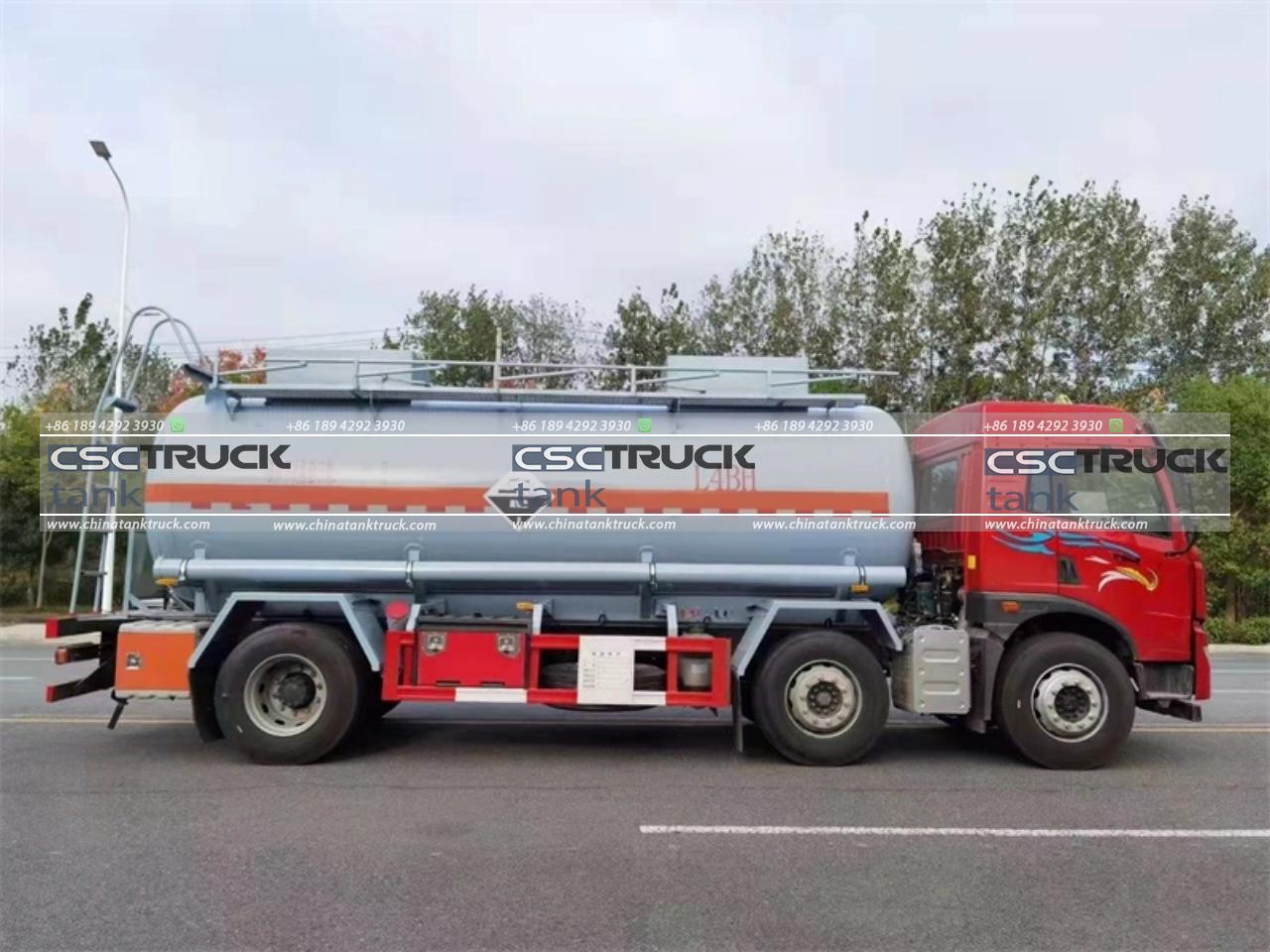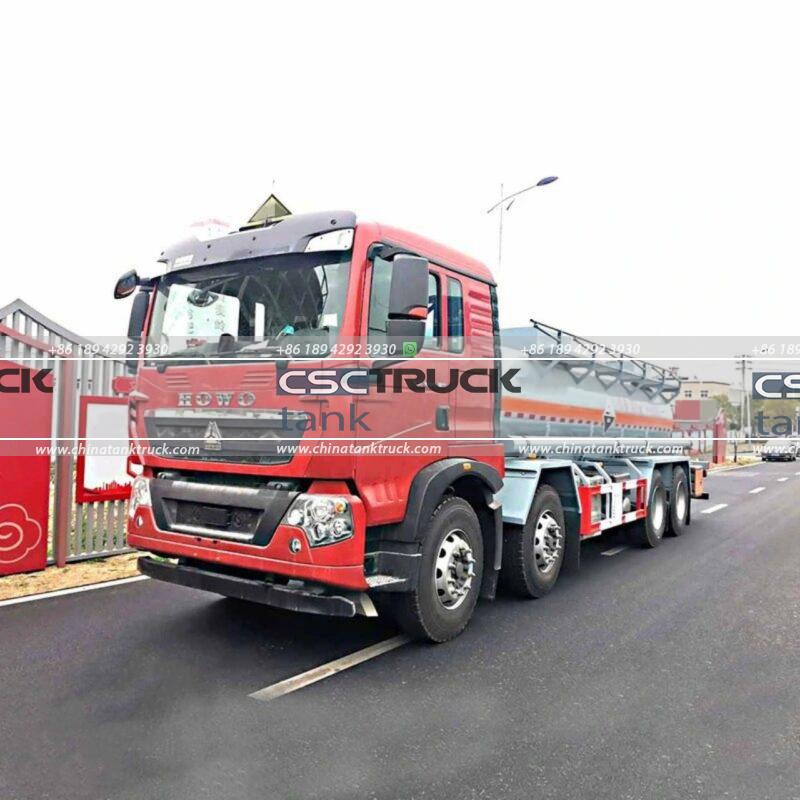Corrosive Tank Trucks: Durable Solutions for Hazardous Material Transport
Transporting hazardous materials, especially corrosive substances, requires specialized equipment and advanced engineering solutions. Corrosive tank trucks are custom-designed to manage these challenges, combining durability, safety, and compliance with regulatory standards. In this article, we will explore the unique features of corrosive tank trucks, the materials used in their construction, and the operational benefits they bring to industries that rely on the safe transport of hazardous materials.
The Importance of Corrosive Tank Trucks
Corrosive substances, such as sulfuric acid, hydrochloric acid, and sodium hydroxide, are critical to industries like chemical manufacturing, agriculture, and pharmaceuticals. Transporting these chemicals, however, poses significant risks. Corrosive chemicals can cause serious damage to standard transportation equipment, resulting in leaks, environmental hazards, and potential harm to both workers and the public. Corrosive tank trucks are specially engineered to address these challenges, equipped with features designed to prevent leaks, withstand chemical wear, and safely transport these materials over long distances.

Key Materials for Corrosive Tank Truck Construction
One of the most critical considerations in designing a corrosive tank truck is material selection. Tanks must be made from materials that resist corrosion and chemical reactions, ensuring the integrity of the tank over time. Common materials include:
1. Stainless Steel: Stainless steel, particularly grades like 316L, is highly resistant to corrosion and is a popular choice for corrosive tank trucks. Its high oxidation resistance and chemical reactions make it suitable for transporting various types of acids, alkalis, and other hazardous materials.
2. Fiberglass Reinforced Plastic (FRP): FRP is a composite material made of a polymer matrix reinforced with glass fibers. It is commonly used for corrosive tank trucks as it offers excellent corrosion resistance, a high strength-to-weight ratio, and is lightweight compared to metals. FRP tanks are often used when transporting highly corrosive chemicals that could react with metals.
3. Polyethylene Linings: In some cases, corrosive tank trucks are equipped with polyethylene or other polymer linings to provide an extra layer of protection. These linings help shield the structural material of the tank from corrosive chemicals, extending the tank’s lifespan and reducing maintenance needs.
4. Rubber Linings: For some applications, especially in high-acid environments, rubber linings can be used inside metal tanks. Rubber provides flexibility and resistance to certain types of corrosion and abrasion. It can be a cost-effective solution but may require frequent inspections and maintenance to ensure no damage or degradation.
5. Specialized Alloys: In applications that require extreme corrosion resistance, specialized alloys like Hastelloy and Inconel are used. These alloys are designed for high durability in aggressive environments, making them ideal for transporting the most challenging corrosive materials. However, their high cost often limits their use to highly specialized applications.
Design Features of Corrosive Tank Trucks
In addition to materials, corrosive tank trucks incorporate several design elements to ensure the safe and effective transport of hazardous materials:
1. Seamless Welding and Leak Prevention: Corrosive tank trucks must have minimal points of weakness. Seamless welding techniques are used to prevent leaks, as any flaw in the welding can create an entry point for corrosion. These welding techniques provide greater structural integrity and minimize the risk of leaks during transportation.
2. Pressure Relief Valves: To handle the gases or vapors released by corrosive materials, tank trucks are often equipped with pressure relief valves. These valves release excess pressure to prevent damage to the tank and reduce the risk of accidents. In addition to standard pressure relief valves, some tanks may include rupture disks for emergency pressure release, providing an additional layer of safety.
3. Vapor Recovery Systems: When transporting volatile or noxious chemicals, a vapor recovery system can be essential. These systems capture harmful vapors and prevent them from being released into the environment. This not only improves environmental safety but also reduces potential health hazards for drivers and other personnel.
4. Impact-Resistant Exteriors: Corrosive tank trucks are often equipped with reinforced exteriors to protect the tank from external damage during accidents or collisions. By using impact-resistant materials or specialized bumpers, the trucks can withstand minor impacts without compromising the tank’s structure or risking a chemical spill.
5. Insulated and Heated Tanks: Certain corrosive materials require controlled temperatures during transport. For instance, sulfuric acid can freeze at lower temperatures, which can create problems in colder climates. Insulated and heated tanks help maintain a consistent temperature, ensuring that chemicals remain in their optimal state for transportation.
6. Secondary Containment Systems: For additional security, some corrosive tank trucks are equipped with secondary containment systems that catch any leaks or spills. This containment is typically placed between the inner and outer walls of the tank, acting as an additional layer of protection against environmental contamination.

Regulatory Standards and Compliance
Transporting corrosive materials is subject to stringent regulations to protect public health and the environment. In the United States, the Department of Transportation (DOT) regulates the design, construction, and operation of corrosive tank trucks. Specifically, the Hazardous Materials Regulations (HMR) set forth by the DOT outline requirements for labeling, documentation, and handling procedures.
Additionally, corrosive tank trucks must often adhere to Environmental Protection Agency (EPA) regulations. This includes measures for leak detection, emissions control, and spill response. Internationally, the International Maritime Dangerous Goods (IMDG) Code and the United Nations Model Regulations on the Transport of Dangerous Goods provide guidance on transporting hazardous materials across borders, which can affect corrosive tank trucks used for international shipping.
Safety Measures and Best Practices
Operating corrosive tank trucks requires specialized training and adherence to best practices to minimize risks. Key safety measures include:
1. Regular Inspections and Maintenance: Regular inspections are essential to detect any wear, corrosion, or damage to the tank and its components. By conducting scheduled maintenance, companies can address potential problems before they lead to accidents or leaks.
2. Driver Training: Operators of corrosive tank trucks need specialized training in handling hazardous materials, including emergency response procedures, spill containment, and proper loading/unloading techniques. A well-trained driver is critical to ensuring safe transportation and handling.
3. Spill Response and Emergency Protocols: Companies operating corrosive tank trucks must have spill response plans in place. This includes ensuring that drivers have access to spill containment kits and that they are trained in emergency protocols. Effective emergency protocols help mitigate the impact of spills or leaks, protecting both the environment and public health.
4. Personal Protective Equipment (PPE): For drivers and personnel handling corrosive tank trucks, PPE is essential. This includes gloves, goggles, protective clothing, and respirators, especially when loading or unloading hazardous materials.
5. Automated Monitoring and Control Systems: Many corrosive tank trucks now feature advanced monitoring systems that provide real-time data on temperature, pressure, and other critical parameters. Automated control systems can detect issues early, such as pressure buildups or temperature deviations, and can even trigger emergency protocols if needed.

Conclusion
Corrosive tank trucks are an essential part of the logistics chain for industries that rely on hazardous materials. The specialized design, durable materials, and advanced safety features of these trucks make it possible to transport corrosive chemicals safely and efficiently. From the selection of corrosion-resistant materials to the inclusion of vapor recovery systems and secondary containment, every aspect of a corrosive tank truck is carefully engineered to address the unique challenges posed by hazardous materials.
By adhering to regulatory standards and implementing best practices, companies can minimize the risks associated with transporting corrosive chemicals. Corrosive tank trucks not only ensure the safe transport of these materials but also contribute to a more sustainable and secure supply chain, supporting industries that depend on hazardous substances while protecting both people and the environment.

